ASUS and ASRock Prep Gaming Motherboards for Intel Xeon E3 v5 Processors
by Anton Shilov on December 29, 2015 8:00 AM EST- Posted in
- Motherboards
- Intel
- ASRock
- Xeon
- Asus
- Skylake
- E3
- Intel C232
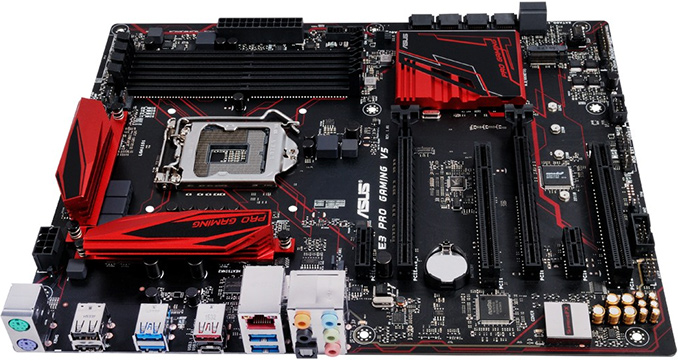
ASUS and ASRock, two major makers of computer motherboards, are rolling out their platforms for Intel Xeon CPUs designed for gamers. While typically Xeon chips are more expensive than comparable Intel Core processors, they feature a number of technologies that make them rather attractive for end-users.
Xeons and Desktops
Intel Core processors for desktops offer performance and feature-set tailored for average users, but server-class Intel Xeon processors for single-socket machines sport such technologies as ECC, vPro as well as Trusted Execution, which may be important for users with custom requirements. Moreover, unlike the $250+ Intel Core i5 6600K, many of the similarly priced quad-core Xeon E3 V5s feature 8MB cache and Hyper-Threading technology, which makes them more comparable to Core i7 in features and should allow slightly higher performance in single-threaded and multi-threaded applications. Intel Core CPUs have their own advantages over Xeon processors, such as unlocked multiplier on select models as well as Intel Identity Protection, but there are still users who prefer to use Xeons.
Back in the day, Intel Xeon CPUs for uniprocessor computers were compatible with higher-end consumer desktop chipsets, whereas Intel Core chips could also work with Xeon chipsets. However, starting from the Skylake generation of microprocessors Intel decided to change its approach to workstation and desktop-class PCs. To that end Xeon E3-1200 v5 microprocessors are incompatible with Intel 100-series chipsets for desktops. For Intel this helps Intel and its partners to better position their products for personal and professional usage, though practically speaking it also serves to draw a much clearer line between the Core and Xeon families, for better or worse.
Even though Intel would prefer to keep its Xeon CPUs away from the consumer market, makers of motherboards plan to give users a choice and are rolling out Intel C232-based platforms with LGA1151 sockets with features for gamers. The Intel C232 is not the most advanced core-logic for the Xeon E3-1200 v5 processors — it only has eight PCI Express 3.0 lanes, up to six USB 3.0 ports, up to six Serial ATA-6Gb/s ports, does not support vPro or Rapid Storage technologies, etc. However, it is also cheaper than the fully-fledged Intel C236 chipset, which is normally used for higher-end workstations.
ASUS Readies Four Xeon Motherboards for Desktop PCs
This week ASUS introduced its E3 Pro Gaming V5 mainboard that supports server-grade Intel Xeon E3-1200 v5 processors as well as a variety of features for desktops PCs used by gamers, such as DDR4 memory overclocking, high-quality integrated audio, M.2 slot for solid-state drives, USB 3.1 support and so on. ASRock is also working on its Intel C232-based Fatal1ty E3V5 Performance Gaming platform compatible with the latest Intel Xeon E3 v5 chips.
The ASUS E3 Pro Gaming V5 motherboard is compatible with all central processing units in LGA1151 form-factor, including the Intel Core i3/i5/i7 and the Intel Xeon E3-1200 v5 families of chips. The board features digital eight-phase voltage regulator module for CPUs that features solid-state chokes and high-quality capacitors. The platform comes with four 288-pin DDR4 DIMM slots, which support memory overclocking and XMP profiles, but do not support ECC technology. The motherboard also features two PCI Express x16 3.0 slots for graphics cards or high-performance SSDs (officially, only AMD’s CrossFireX multi-GPU technology is supported, as the slots are x16/x4), two PCIe 3.0 x1 and two PCI slots for add-in-boards, one M.2 slot for SSDs (with NVMe support), six SATA 6Gb/s ports for storage devices and so on. The ASUS E3 Pro Gaming V5 is equipped with the ASMedia ASM1142 USB 3.1 controller (and has one USB 3.1 type-A and one USB 3.1 type-C ports), Intel I219LM Gigabit Ethernet controller with ASUS GameFirst software technology that prioritizes gaming traffic, 7.1-channel SupremeFX audio with Realtek ALC1150 codec and so on. The E3 Pro Gaming V5 motherboard is compatible with liquid-cooling solutions, features onboard thermal sensors as well as automatic fan controls.
The Intel C232-based motherboard from ASUS is clearly a consumer-oriented system board, yet, with support for Xeon processors. In fact, even the layout of the E3 Pro Gaming V5 resembles that of the ASUS B150 Pro Gaming/Aura, an affordable platform for gamers. Next year the company plans to introduce three ASUS Signature-series motherboards — including the E3-Pro V5 (ATX), the E3M-ET V5 and the E3M-Plus V5 in micro ATX (mATX) form-factor — that will also support Intel Xeon chips. Apparently, ASUS plans to offer relatively inexpensive platforms for Intel Xeon E3 v5 microprocessors.
ASRock Preps Two Xeon Motherboards for Gamers
ASRock is another company designing consumer-grade motherboards featuring Intel C232 core-logic and compatible with workstation-class Intel Xeon chips as well as desktop-class Intel Core CPUs. The ASRock Fatal1ty E3V5 Performance Gaming/OC and the ASRock E3V5 WS will be the company’s first two mainboards to support Xeons along with certain desktop features.
The two Intel C232-based motherboards from ASRock will share one design, but will sport different style and different BIOS versions with slightly different feature-set. The motherboards will have high-quality five-phase digital VRM, four slots for DDR4 memory with or without ECC, two PCI Express x16 slots, three PCIe x1 slots, multiple Serial ATA-6Gb/s ports, USB 3.0 support, integrated audio and so on.
The ASRock Fatal1ty E3V5 Performance Gaming/OC was designed primarily for enthusiasts and gamers. The motherboard sports ASRock’s technologies like Gaming Armor, Key Master and Fatal1ty mouse port that are typically found on desktop-class platforms from the company. In addition, the Fatal1ty E3V5 Performance Gaming/OC features DDR4 memory and BCLK overclocking, something that server-class motherboards do not typically support.
The ASRock E3V5 WS was designed for workstations. It cannot overclock CPUs or memory and is not equipped with gaming features. However, it uses onboard Intel I219LM Gigabit Ethernet chip that was developed with servers. The E3V5 WS motherboard is compatible with AMD FirePro and NVIDIA Quadro professional graphics cards as well as with server operating systems.
Worth Considering?
While Intel’s Xeon E3-1200 processors are not designed for gamers or enthusiasts in general, given the shortage of Intel’s Core i7-6700K chips, some may consider to buy a Xeon E3 v5 processor with 8MB cache, Hyper-Threading and other technologies instead.
Since the Intel Xeon E3-1200 v5 processors and the Intel C232 core-logic do not officially support overclocking, end-users, who would like to boost performance of their central processing units will have to experiment with BCLK overclocking, which may not provide very good results. Moreover, the C232 does not support as many PCI Express 3.0 lanes as the Intel Z170 or the Intel C236, which means expansion capabilities of desktops that use the core-logic will be limited.
The motherboards for the Intel Xeon E3 v5 CPUs from ASUS and ASRock look rather solid in terms of quality, but can hardly be called feature-rich. Nonetheless, if their price is right, a Xeon-based gaming system may be worth considering.


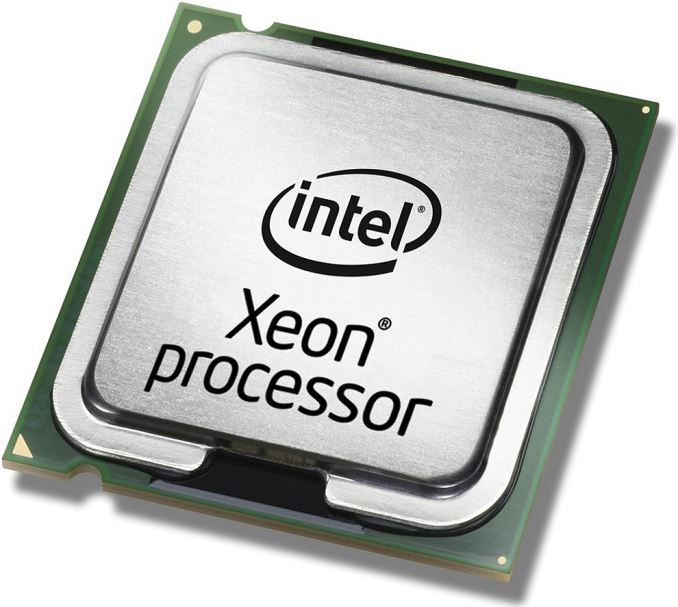
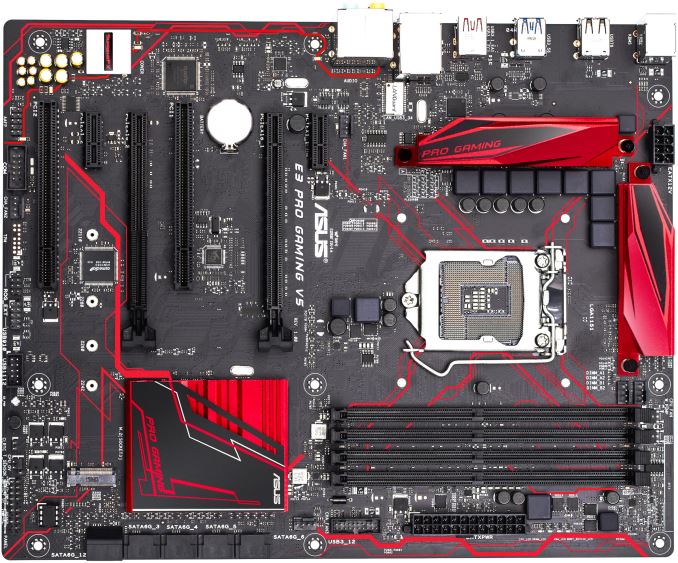

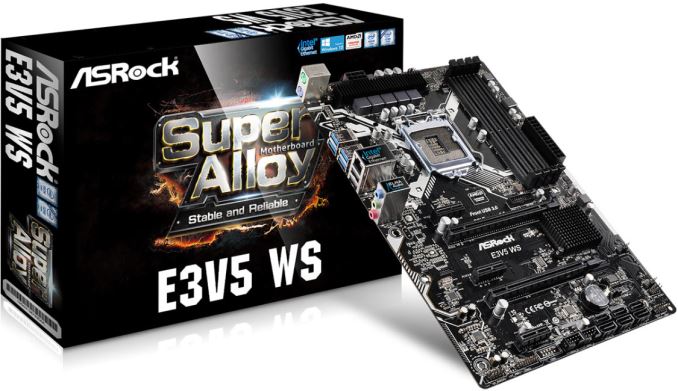
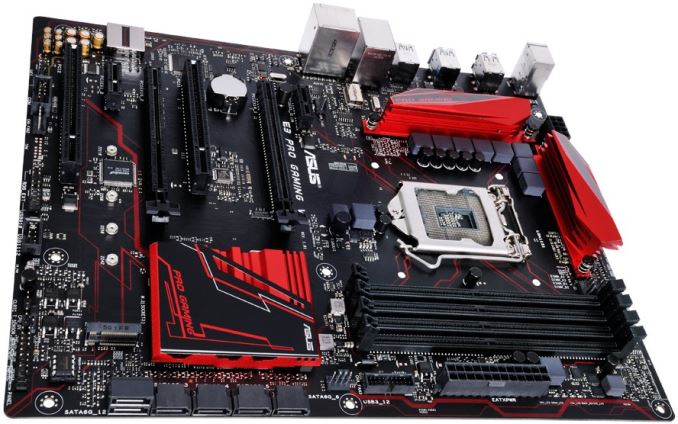








49 Comments
View All Comments
ognacy - Tuesday, December 29, 2015 - link
I created an account just to comment on this article.AT is becoming a joke. How is this article not a PR copy paste?
"better position their products for personal and professional usage"? What does this mean, in English? "Better milk the enthusiast crowd"?
Compare the Xenos to X5 so they actually show some sort of an advantage? Really? Where is the price and performance comparison? Because i7 is hard to find? Really? A 10sec google shows me a dozen places where it is available immediately.
Write about "enthusiasts" and then proceed to briefly acknowledge that the badly crippled C232 chipset, more in line with i3/i5 levels of performance, has serious shortcomings? That this chipset does not belong in one sentence with anything enthusiast-worthy?
Seriously, one more article like this and I am out of here. It's the worst kind of internet advertising, both inefficient and damaging to quality content that actually still appears here every now and then.
acrobatbat - Tuesday, December 29, 2015 - link
Just a correction for youSkylake core i7's are hard to find and when you do find them they are overpriced. The corresponding xenon processors are much cheaper at present and since most enthusiasts don't need/want integrated graphics it would actually make more sense to buy one.
But Intel decided to mess with us and force a new chipset for the xenons unlike the previous generation.
I actually considered getting a xenon but I wanted a mATX board so that was a no go
Ryan Smith - Tuesday, December 29, 2015 - link
I must admit I find some of this feedback to be a surprise.To be clear, nothing here is advertising. ASRock and ASUS are making Xeon gaming motherboards. To us, this is interesting, and certainly newsworthy, which is why I had Anton create this article. We haven't had Xeon gaming boards before, as until now it has never been necessary.
That said, I do appreciate the feedback. And to that end let me throw out this question to you: how would you prefer to see this information written up as a Pipeline article? What would you like done differently?
drzzz - Tuesday, December 29, 2015 - link
Ryan,You asked so I will give some feedback on how this could have been better and seem less like PR/Advertising/Marketing.
First - Ditch the image of the Intel Xeon Processor. That is a PR/Marketing image and frankly not needed in anyway to make the article good. Really gives the article the PR/Marketing feel right away.
Second - Be truthful about the Xeon E3 v5 processors. Quoting Anton "Moreover, unlike Intel Core i5, all quad-core Xeon chips for uniprocessor systems feature 8MB cache and Hyper-Threading technology, which means slightly higher performance in single-threaded and multi-threaded applications." Ian has already posted a chart after a reader stated that the ARK site indicated E3-1220 V5 not being listed at having Hyper-Threading. As it stands not all E3 v5 Xeon processors support Hyper-Threading and that makes Anton statement false. This as I said elsewhere smacks of poor fact checking and proof reading. Making something out to be more than it is generally is the job of PR/Marketing. AT once stood for solid factual articles even in the pipeline. Pipeline is really starting to look and read like a pig trough.
Three - What shortage of i7-6700K processors is being referenced. I can get them locally and several sites on the internet. Even Amazon has them in stock. Now if by shortage Anton was meaning to reference the current situation that the prices tend vary greatly vendor to vendor then he should have said that. However I think most of your readers will tend to agree that by shortage we expect to find them out of stock or back ordered at most if not all vendors. This is simply not the case as Google gives you 5 vendors with in stock supplies in the first 6 listings when I did a search today.
Those are just 3 points that could be handled better. It really is a sloppy piece, poorly proof read and poorly fact checked. Given that AT specifically has an article up about the E3 v5 processors that is correct in their capabilities makes statements in this article even more troubling.
You have gotten a lot of feedback in comments lately that pipeline articles are sounding more and more like PR/Marketing efforts or just poor writing that is re-using the PR/Marketing material with little or no original content. If your writers can't create compelling articles that are not drawing this type of criticism then perhaps they are not the writers AT needs or perhaps your leadership in the area of what is acceptable or tolerated is lacking. Either way AT pipeline articles have become a joke.
Ryan Smith - Wednesday, December 30, 2015 - link
drzzz, thank you very much for the feedback. Just to respond to everything on a point-by-point basis.1) I disagree to some extent. But I can see why you'd feel that way. So it's something we'll try to keep in mind.
2) Completely agreed. That is our fault for missing the non-HT processors and the article has been corrected. Thank you for pointing that out.
3) We'll have more on this later today in a separate article. But there is definitely a shortage of 6700Ks right now with the major US online retailers. Many are out of stock, others such as Newegg or the Amazon marketplace sellers are charging well over MSRP (which is what they typically do when they know supplies are tight).
Impulses - Wednesday, December 30, 2015 - link
Newegg is definitely price gouging by like $60+, and it's been out at Amazon (not counting merchants) for a while... I'm kind of amazed this is still ongoing, rather glad I ended up buying a combo at Newegg during the early days frenzy (and using a Premier trial to return half of the combo at no extra expense).fluxtatic - Wednesday, December 30, 2015 - link
"how would you prefer to see this information written up as a Pipeline article?"Well, having it not read like somebody copy-pasted an Intel press release to start. Might just be the way Anton writes, but I couldn't shake the feeling that most of this had been fed to AT by some PR flack verbatim.
"This helps Intel and its partners to better position their products for personal and professional usage."
It might be a bit of bias on my part, but really? Don't walk on eggshells here; follow that with, "Yes, Intel is once again subdividing the market hoping to squeeze a few more dollars out of their customers." At the very least, don't word it as if it's coming out of some Intel flunky's mouth.
And a bit of a niggle, but the phrase "and so on" appears in two consecutive paragraphs, and again further down. Learn how to end sentences when you've run out of things to say.
If the writers have something to say, even a paragraph or two, have at it. If it's going to go into the Cuisinart with whatever press release they just got...maybe have a second look. Maybe further section the site - companies want press releases regurgitated? Make a (clearly marked) section for that. The writers have a couple worthy paragraphs about whatever subject? Put it down and post it. The Pipeline turning into some Frankenstein's monster of actual writing mashed together with press releases kinda blows.
mrdude - Wednesday, December 30, 2015 - link
"We haven't had Xeon gaming boards before, as until now it has never been necessary."That might be true, but it doesn't make it any less of a dumb product. One of those boards explicitly states that it doesn't even support ECC. <Insert Scooby Doo 'Errr?'> Then there's the lack of IPMI, and we can go on and on. It's a server motherboard in name only.
There are real stories here that led us to the point where we're being pushed gaming + server motherboards with marketing jargon that only Francois Piednoel would be proud of, and it's not the motherboards.
-Intel's persistent issues with yields at the top end on their 14nm node causing increases in pricing and decrease in availability
-AMD can't get a team of engineers to screw in a lightbulb correctly nevermind in a timely manner
-It's more market segmentation than we saw with previous Xeons/Core-X processors as the slightly cheaper (and completely equivalent as in it's the same frickin' processor) Xeons were compatible with consumer chipsets. Now that we can't buy those attractive E3-1230vX processors, we get these "gaming/server motherboards."
The tone of this article completely neglects the above points and provides ammunition to the notion that AT has lost sight of its readers' best interests -- at least with respect to this particular article. I don't personally feel that way, but this pipeline article certainly rubbed me the wrong way given the reality of the matter. I can completely understand that it's something of an interesting product, but what's far more interesting is how and why we've gotten to this point.
"However, starting from the Skylake generation of microprocessors Intel decided to change its approach to workstation and desktop-class PCs. To that end Xeon E3-1200 v5 microprocessors are incompatible with Intel 100-series chipsets for desktops. For Intel this helps Intel and its partners to better position their products for personal and professional usage, though practically speaking it also serves to draw a much clearer line between the Core and Xeon families, for better or worse."
That's the only place any of the points I mentioned are brought to light in the article, and the author declares that it's 'for better or worse.' I'll help you out here: it's worse. If you think it's better, you're losing sight of what AnandTech stands for.
ognacy - Monday, January 4, 2016 - link
Well, as others here have said - I'd skip the typical marketing talk. The "better position" thing sounds like it came straight from some marketing drone at Intel. I can't imagine a normal person saying something like this with a straight face.More importantly, I'd like to hear why should I bother with a Xeon CPU with the new chipset, as opposed to an i5 or i7. It would seem to me that the mix of the high end CPU with clearly not-enthusiast-grade chipset makes no sense whatsoever for an enthusiast, prosumer or someone with money to burn. If that's because of i7 shortage - call it out and compare prices and features. Is a top of the line i7 with it's current $50 markup over MSRP worse than a Xeon with one of those new motherboards? That's what I'd consider valuable information.
Just my 2 cents.
lagittaja - Tuesday, December 29, 2015 - link
Ugh, that C232. Pretty much like a B150. But C232 doesn't have VT-d.Intel is being a major dick here. All the 100 series chipsets support VT-d.
Previous C222 C224 C226 chipsets all supported VT-d.